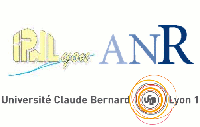Orateur
Mme
Irina Bavykina
(Max Planck Institute for Physics (Munich))
Description
The goal of the CRESST (Cryogenic Rare Event Search with Superconducting Thermometers) Dark Matter search experiment is the direct detection of Weakly Interacting Massive Particles (WIMP) via their elastic scattering off the nuclei in the target absorber. The low temperature detectors employed by CRESST can discriminate between electron recoil events (caused by beta- and gamma-particles) and nuclear recoil events (caused by WIMPs and neutrons) by simultaneous measurement of phonon and scintillation light signals. A high scintillation yield in the mK temperature range is a key criterion in the choice of a scintillating absorber. This work reports on the development of the first prototype phonon detectors based on calcium molybdate and zinc tungstate crystals. The characterization tests of the scintillation light yields at room temperature are presented. The influences of annealing and W-film deposition are discussed.
Author
Mme
Irina Bavykina
(Max Planck Institute for Physics (Munich))
Co-auteurs
Dr
Franz Proebst
(Max Planck Institute for Physics (Munich))
Dr
Godehard Angloher
(Max Planck Institute for Physics (Munich))
M.
Patrick Huff
(Max Planck Institute for Physics (Munich))

